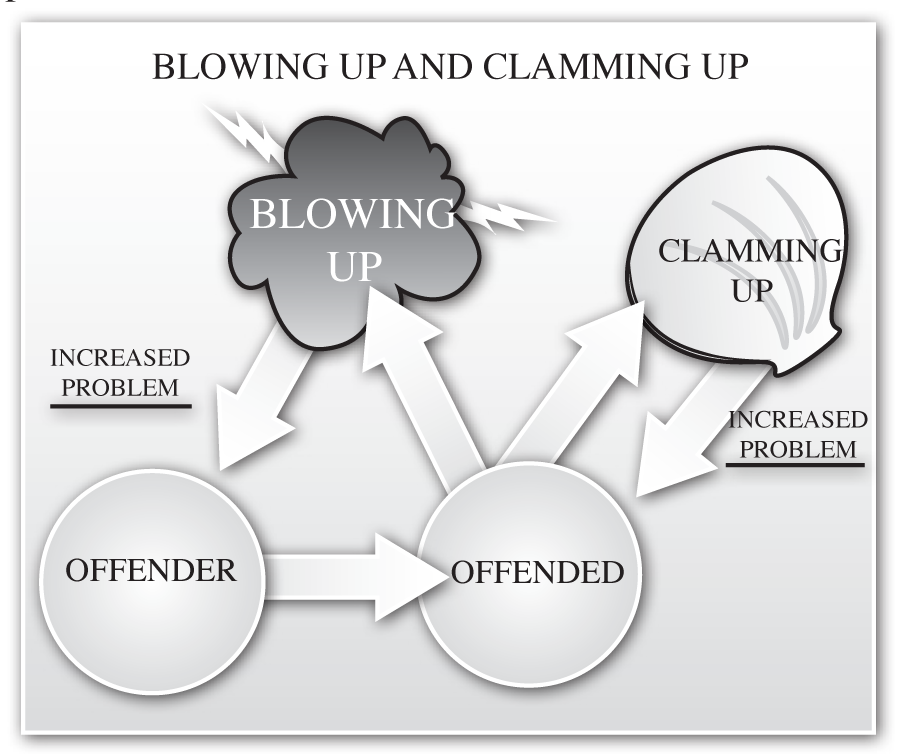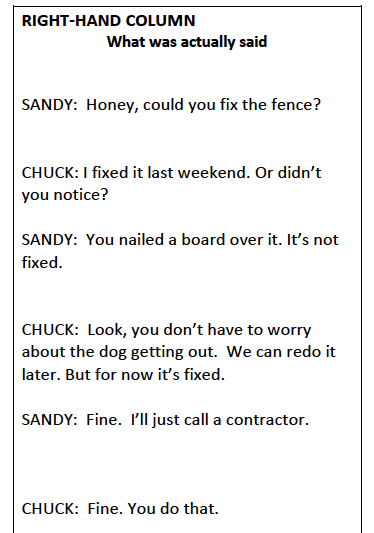Relationship science tells us that frustrations in your marriage that are recurring and that trigger an intense emotional reaction, come from your past, not your partner.
“Wait a minute! It’s not my past, it’s my partner who is frustrating me!”
Ok, I realize you get frustrated by what your partner does or doesn’t do. But if your reaction is intense and it happens three times or more, science says your partner is only the trigger of a deeper frustration from childhood.
And, let me guess…your partner sees your reaction as an ‘overreaction’ that not justified.
Am I right?
Behind every recurring, emotionally charged frustration is a deep desire to get something you didn’t get in childhood.
Here’s how you can turn frustrations into requests and keep them from wrecking your marriage.
1. Engage in the Imago Couples Dialogue
The first step is to make your conversation safe.
Laurel was upset because she felt like her husband Ben left her alone at a party. When she brought it up, Ben reacted to her. As you read on, you’ll see how escalated it got!
The Imago Couples Dialogue helped Ben regulate his reaction so he could listen to Laurel. It also made Laurel feel safe enough to access information buried deep in her subconscious mind.
2. Identify the root issue
When a conversation is safe you can identify how your frustration is connected to childhood.
Laurel discovered that her ‘overreaction’ was because her childhood wound of abandonment was triggered when she felt Ben was leaving her.
She had grown up as an only child. Her dad left when she was eight and her mom worked long hours. After school she was at daycare until she was old enough to be left alone at home.
3. Turn your frustration into a request
Buried deep within every frustration with your partner is a wish. A wish to finish what was left undone in childhood. If that frustration can be restructured into a request, your partner can give you the healing you’re unconsciously looking for.
Laurel’s frustration: ‘I feel like you left me at the party and when I passed by you, you didn’t speak to me. You didn’t even look at me!’
Ben’s escalated reaction to Laurel’s frustration: ‘What do you mean?! It was a networking party for crying out loud! I was there for business! I wanted you to come along, but I can’t even do my job without you complaining like a baby! When are you going to grow up?!
If they continue to talk like this, Laurel’s wound will continue to be reinjured and the frustration will never be resolved.
Here’s how the Couples Dialogue helped Laurel restructure her frustration into a request.
Laurel: ‘Last night when we were at the party and you were talking to potential clients, I felt really alone, just like when I was little and came home from school every day to an empty house. What I’m really afraid of is that you don’t realize what being alone does to me and that I’ll always have this feeling of being abandoned.’
Ben (Mirroring): ‘What I hear you saying is that when I was talking to potential clients you felt really alone. It reminded you of the feelings of abandonment you had when your mom was at work and you were alone in the afternoons. And that brings up a deeper fear that you’ll always feel abandoned. Did I get it? Is there more about that?…
Ben (Validating): ‘You make sense. Anyone would feel that way given your circumstances.’
Ben (Empathizing): ‘I can imagine it must feel really bad when you have those deep feelings of being abandoned or forgotten.’
Laurel (turning her frustration into a Request): ‘One thing that would help me the next time we’re at a party is if you will look for me every 30 minutes, touch my hand, look me in the eye and ask how I’m doing.’
Ben (responding): ‘I will be more than happy to do that.’
(Big hug!)
If Ben follows through, he will experience growth, and it WILL bring healing to Laurel!
That’s how you turn a frustration into a request and keep it from wrecking your marriage!






